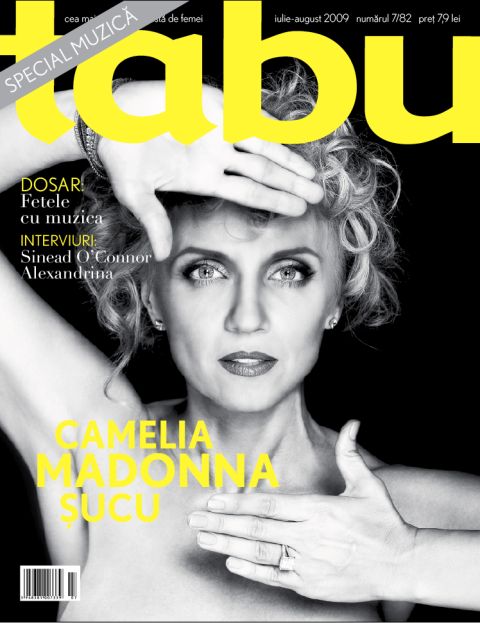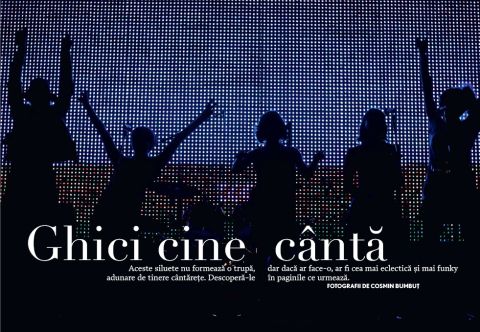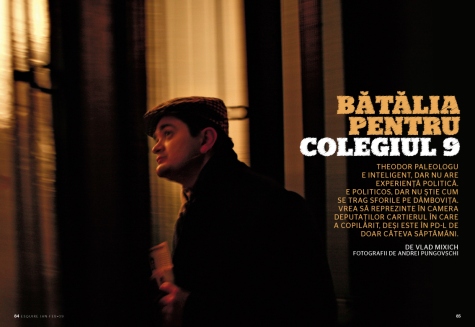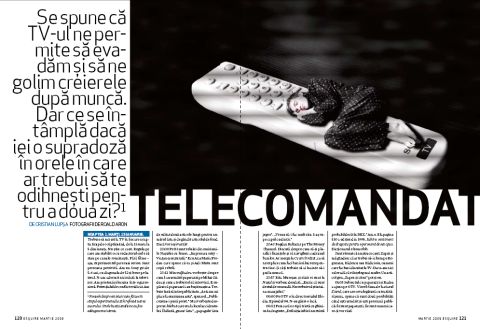Tom Junod despre jurnalism, reguli ÅŸi poveÅŸti
Nu e un secret că Tom Junod e scriitorul meu preferat. Spun scriitor și nu jurnalist pentru că Junod are o relație ambivalentă cu acest termen. Prin preferat înțeleg următoarele: când apare ceva nou de Tom Junod pun totul deoparte și mă apuc să citesc. De ce? Pentru că îmi oferă garanția unei experiențe memorabile și unor trăiri puternice. Deseori, modul în care omul filtrează realitatea face ficțiunea modernă să pară un simplu exercițiu de imaginație.
N-are rost să continui – mai bine îl las pe maestru să vorbească. Ce urmează este textul integral al unui discurs fabulos ținut de Junod la Missouri School of Journalism, în martie 2009. Tema este viitorul poveștilor într-o lumea twitterată, dar această descriere grosieră nu face decât să submineze experiența lecturii acestui discurs.
După ce terminați de citit, nu uitați să spuneți cum a fost.
* Tom Junod s-a năcut în 1958 și scrie în prezent pentru Esquire. A câștigat două National Magazine Awards și a fost finalist de alte zece ori, cel mai recent pentru un portret făcut lui Steve Jobs. Citiți cu încredere și textele lui despre Norman Mailer, cuvântul “crimă”, băieții răi și gura lui Hillary Clinton.
——————————————————–
Tom Junod’s Keynote Speech
Missouri Association of Publications annual meeting
Missouri School of Journalism, March 2009
Hello everyone. Thanks for having me, and thanks, John, for your kind introduction.
You know, I have to admit, I”™ve been agonizing over what to say here today.
Not because of a lack of anything to say, not because there”™s not much to talk about, and not even because I didn”™t go to journalism school and have been railing against J-schools in general for so long and so hard that I feel slightly disingenuous standing here and addressing you from this podium on the invitation of one of the most highly prestigious ones.
No, I”™ve been agonizing because, well, we live in momentous times. If anything, there is too much to say, and I”™ve found that rather than standing against the values imparted by J-school educations ““ as I have always told myself that I have ““ my 22 years of writing for magazines have made me rather more conventional than I think I am. I have always complained about journalism and its restrictions, I have always looked at journalism ““ both its vaguely defined sense of rules and regulations, and its rather arrogant self of itself as a profession, instead of a trade – as a problem to be overcome, rather than a religion to be practiced. But now that the whole thing is threatened, it turns out that I like journalism quite a bit. You could even say that I miss it pre-emptively.
Tabu de iulie-august 2009

Trei lucruri despre Tabu de iulie-august. În primul rând, materialul de copertă scris de Cristina Bazavan despre Camelia Șucu, una dintre cele mai de succes femei de afaceri din România, deghizată în Madonna pentru această apariție.
Mai e povestea Mariei, cea mai tânără bloggeriță din România. Ana Maria Ciobanu îi face fetiței un portret care trece cu ușurință de la anecdote din viața celei mai deștepte fete din clasă la momente din viața celei mai bătăușe. Mai jos, paragraful de deschidere:
Maria David are 8 ani și 8 luni și e cea mai tânără bloggeriță din România. A început să posteze acum un an și pune pe blog cam tot ce-i trece prin minte: poezii, povești, întâmplări din vacanță, scrisori către Moș Nicolae și Moș Crăciun, dar și sugestii de organizare a timpului. Ultimele pentru că nu-i plac oamenii care stau degeaba. “Timpul este foarte prețios și nu trebuie să-l irosim.”, a scris la începutul anului, continuând cu o listă întreagă de activități pe care trebuie să le faci ca să nu devii “om de serviciu”: să te trezești cât mai devreme (la 7:00!), să faci gimnastică, să alergi prin parc la aer curat, să citești și să te informezi pe Google despre astronomie, chimie, religie, gramatică, zoologie.
Dosarul din această lună adună într-un pictorial-spectacol cinci dintre cele mai interesante voci feminine românești pe care probabil nu le-ați ascultat încă. Descoperiți în revistă cine sunt cele cinci siluete din fotografia de mai jos:
UPDATE: Am dezvăluit identitatea celor cinci aici.
Paleologu cel din altă lume
Theodor Paleologu este unul dintre miniștrii cei mai pomeniți în ultima vreme – după Monica Iacob-Ridzi și etern călătoarea Elena Udrea – și tot mai rar într-un context favorabil. Pe lângă articolele de presă despre care Vlad Mixich vorbește aici, mai e și pasiunea lui Mircea Badea de a-l imita conștiincios și consecvent pe ministrul culturii și pronunțările mai puțin fericite ale acestuia (amuzant, ce-i drept).
Analiza lui Vlad de pe HotNews mi-a amintit de textul pe care l-a scris toamna trecută pentru Esquire. Vlad și fotoreporterul Andrei Pungovschi au stat alături de Paleologu în ultima lună de campanie pentru parlamentare, obținând un acces rar în vintrele mașinăriei politice. Ce au văzut atunci e cam ce se spune și acum: că Paleologu pare din altă lume. Desigur, conotația acestei constatări s-a modificat puțin.
Descărcați articolul în format PDF.
Nopţi la televizor
Discuția despre calitatea televiziunii din România mi-a amintit de un experiment pe care l-am făcut în ianuarie 2008 pentru Esquire -Â o săptămână de holbat la televizor, de la 11 seara la 5 dimineața. N-am intenționat să fac critică, doar o zapare nesănătoasă printre posturile românești.
Recitind textul îmi dau seama că experimentul ar da alte rezultate astăzi, când programul TV de după 11 e mult mai aglomerat cu isterie decât pe-atunci, când încă nu existau Capatos ori Lazarus. Doar Elodia.
Click pe imagine să descărcați textul în format PDF.
NiÅŸte porno ÅŸi niÅŸte jurnalism
Rezumat pentru Twitterati: Un post despre cum difuzează Kanal D porno românesc cu norișor și despre cum poți scrie bine despre sex (cu recomandări cu tot).
Aseară, puțin înainte de miezul nopții, am făcut un circuit al canalelor TV înainte să mă pun la un film. E o practică curentă, un supliciu prin care descopăr sau testez idei. Pe Kanal D, Luis Lazarus, una din mândriile crescătoriei de păsări Phoenix a televiziunii îndoielnice, promitea mult șoc și porno cu Eva Kent și Sexy Brăileanca – odată cu bulina de 18 ani pe care tocmai urma s-o lipească pe ecran.
M-a amuzat promisiunea lui Lazarus. Una dintre constantele televiziunii isterice după format OTV, care se practică cu succes de peste un an încoace, e supralicitarea. Nici “mutările-bombă” anunțate de vreun patron de club nu se finalizează, nici politicianul cu hârtii în brațe nu face promisa “declarație incendiară”, nici turma porno nu dezvăluie “informații de culise”. În spiritul promisiunii de acest tip, ar fi trebuit să urmeze un clip filmat cu telefonul mobil, din mașina aflată pe malul opus casei în care se pare că niște siluete se ocupă una de cealaltă.
Și apoi a început primul clip, o captură dintr-un film porno autohton, care se deschidea odată cu protagonista (Eva Kent), a cărei zonă genitală era acoperită de capul unui tip, peste care venea – din studio, ca o umbrelă anti-CNA – un norișor. Doar că ăsta a fost cel mai transparent și mai fin norișor de blur pe care l-am văzut de ceva vreme. Nici hăcuiții de la știrile de la ora 5 nu beneficiază de așa o ceață fină.
Pe Kanal D era pornografie vag blurată de un norișor nesigur, care nu putea întotdeauna să anticipeze mișcările bruște ale organelor, care mai scăpau (sau erau scuturate) și pe lângă. Și clipul merge și merge și merge și rămâne acompaniament în dreapta ecranului, pentru o dezbatere despre cum unele femei își asumă filmele porno și altele nu. Cei care procesau această dilemă a schimbării opțiunii de viață erau Nikita, Sexy Brăileanca, bunica-porno, elevul-porno, regele manelelor porno, Lazarus și – cred – asistenta lui (Alina Radu), care a duduit emfatic că modelele tinerelor fete ar trebui să fie Mihaela Rădulescu, Andreea Marin sau Mircea Radu.
Acest post nu este o critică TV – deși s-a transformat după câte văd într-un “Dacă doriți să revedeți” în format text. E limpede că nația română are o relație cu sexul mai complicată decât Elena Băsescu cu PD-L-ul. Îl vindem și îl blamăm, moralizăm în timp ce ne rugăm să scoată rating (vezi Capatos și colegu’ dând lecții de viață elevei porno acum ceva luni bune, în timp ce derulau imagini cu ea și cu un castravete) și nu reușim să înțelegem mare lucru despre ce-i cu el și ce spune despre vremurile în care trăim.
Americanii au și ei o relație complicată cu sexul, dar unii dintre ei știu cum să-l abordeze în așa fel încât cei dispuși să consume rezultatul se edifică cât de cât. Mai jos e o listă subiectivă – adică alcătuită din amintiri – de texte care vorbesc nespectaculos despre sex, sexualitate și moravuri. Nu ajunge să băgam un DVD sau să oprim televizorul. După cum spune și personajul pe care l-am portretizat pentru numărul de iulie-august al Esquire (un bărbat care apare pe sticlă de peste 10 ani):
E dreptul lor să se deconecteze până la urmă, dar știi ce se întâmplă? Trăiesc în țara asta și vrând nevrând se lovesc de ele. Nici mie nu-mi face plăcere să fiu conectat la lucrurile joase, dar uneori e bine să le știie și pe alea că nu știi când te lovești de ele. (…) Mi se pare că pentru ei e important să știe tot ““ inclusiv cine e Sexy Pădureanca. Tre”™ să ia câte puțin din tot. Știu că nu e plăcut, dar asta e. Nici aspirina nu e bună la gust…
Și acum, jurnalism despre sex:
- În The Atlantic, un articol despre isteria creată de zvonurile că adolescentele americane sunt înnebunite după sex oral. Da, e și despre Bill Clinton.
- În Rolling Stone, un portret făcut de Vanessa Grigoriadis actriței porno Sasha Grey, care în vara asta face pasul de la hardcore la un film de Steven Soderbergh.
- În The New Yorker, un text de Ariel Levy despre “manualele” sexului.
- În Esquire, un portret făcut de Tom Junod lui Greg Dark, pornograf notoriu ajuns regizor de videoclipuri pentru tinere dornice să ajungă Britney Spears.
- În superba colecție de texte de Mike Sager, “Scary Monsters and Super Freaks”, există două povești cutremurătoare despre decăderea și, desigur, moartea a două staruri porno: “The Devil and John Holmes” și “Little Girl Lost”.
- În New York, despre cum anii de reportaj pe care Gay Talese i-a investit în cartea lui despre sex în America în anii ’70 (Thy Neighbor’s Wife) puteau să-i distrugă propria căsnicie. (Plus un text despre cum a documentat această carte.)
Nu știu sigur cum s-ar transpune așa ceva la noi. Apropo TV au făcut un episod întreg despre România porno. În mod text, Ani Sandu a încercat să atingă puțin comercializarea ideii de sex – și dependența fetelor tinere de recunoaștere – într-un text despre fata de la pagina 5, care a apărut acum două luni în Tabu.
Ce ar trebui să urmeaze? Un portret al Alinei Plugaru?
Cea mai scumpă revistă din lume
nomenus quarterly are un tiraj de 10 exemplare și costă 6,500 de dolari. Tirajul a scăzut recent, concomitent cu cresterea prețului. Despre ea aici.
Lectură de weekend: Naşterea unei voci
Din The New Yorker, un text despre nașterea săptămânalului The Village Voice, una dintre cele mai vechi “publicații alternative” americane. Mi-a plăcut modul în care își defineau direcția politico-culturală și publicul țintă – căutând acea nișă rară și riscantă, linia de demarcație între un produs comercial și unul anti-sistem. Câteva exemple:
The literary Zeitgeist, I guess you”™d call it, or Weltanschauung, around the Remo and the New School was the intellectual heritage of the Voice,” Fancher once said. That Weltanschauung was humanist and individualist; it was anti-relativist and anti-utopian. It was even, in some respects, conservative: it was reflexively suspicious of calls for change””part of the intellectual heritage of anti-totalitarianism. What the Voice was not was therefore as important as what it was. It was not a left-wing paper; it distanced itself from the Old Left and, later on, from the New. The editors were disaffected with liberalism, but the goal was to avoid ideology altogether. “œThe Nation, The New Republic, and Partisan were all boring,” as Fancher later put it. “œIdeology bored us“”not simply the Communist line but the antiCommunist line too.” (…)
Nor was the Voice an underground or countercultural paper. The idea was to make money (at least, not to lose it), and though the business side of the operation was fairly hopeless””[Norman] Mailer”™s dad, Barney, was the first accountant; at one point, every member of the sales department was a poet””the founders worked hard to distribute the paper to newsstands all over the city.
(…)
[Jules] Feiffer”™s characters were sometimes business types and politicians, but they were also sometimes caricatures of the sort of people one would imagine to be Voice readers””beatniks, lounge lizards, modern dancers. The hip was mocked as much as the square. This was also an attribute of the new comedy: it made fun of the establishment, but it was not antiestablishment. It was merely disillusioned, which is the place where all comedy begins and ends. “œThe beat generation,” Sahl used to say, “œis a coffeehouse full of people expectantly looking at their watches waiting for the beat generation to come on.”
But which Feiffer characters were the real Voice readers? This touches on one of the coy mysteries of journalism, which is that the reader implied by a magazine”™s interests and attitudes is rarely the magazine”™s actual reader. If the actual Voice reader played the bongos or wore a leotard, the paper would not have lived for a year, because very few advertisers will pay to reach coffeehouse musicians and modern dancers. As McAuliffe explains, by the time the Voice began making money, in the mid-nineteen-sixties, the typical reader was thirty years old and had a median family income of $18,771 (about a hundred and twenty-five thousand dollars today). Almost ninety per cent of Voice readers had gone to college; forty per cent had done postgraduate work. Most had charge accounts at major department stores, such as Bloomingdale”™s. Most owned stock. Twenty per cent were New Yorker readers. The Voice was the medium through which a mainstream middle-class readership stayed in touch with its inner bohemian. It was the ponytail on the man in the gray flannel suit.
(…)
The Voice was a model for two very different journalistic products. One was the alternative paper. The first of the alternative, or underground, papers was the Los Angeles Free Press, commonly called the Freep, which was founded in 1964 by Arthur Kunkin. Kunkin had been inspired by a single issue he had read of the Village Voice. “œI liked the investigative articles, their length, the mixture of culture and community,” he said. What he did not like were the Voice”™s politics””a kind of centrist liberalism. Kunkin despised liberals; his paper”™s orientation was radical. Walter Bowart, one of the founders of the Voice”™s crosstown rival, the East Village Other, which was started up during the New York newspaper strike of 1965, was more blunt. The Voice, he said, “œwas a straight old safe Democratic paper, what you get when a businessman and a psychiatrist go into journalism.”
Scrieţi aşa!
Din câte observ, Grigore Cartianu de la Adevărul are multe certitudini. Reporter Virtual publică un cod de scriitură care i-ar aparține lui Cartianu și care ar fi fost creat pentru angajații de la Adevărul Holding. Nu e deloc rău că omul a înțeles nevoia standardizării unor procese (vezi AP Style, NYT Style) și a decis să instituie un stil. E însă amuzant cât de tranșant le spune în unele locuri:
– Noțiunile de cultură generală (geografie, istorie, anatomie etc.) trebuie verficate, să nu scriem vreo prostie!
– Gândiți invers! Fiți altfel decât ceilalți! Sursele neoficiale să fie mai multe decât cele oficiale. Doar așa veți ieși din banalitate și veți atrage atenția asupra voastră.
– Regula “œScrieți așa cum vorbiți!” se aplică și pentru ansamblul de două cuvinte care se pronunță legat, fiind unite prin cratimă (care înlocuiește o vocală). De preferat: se-ntâmplă; de evitat: se întâmplă. E obligatoriu: să-și imagineze; e de-a dreptul jenant: să își imagineze.
Ideea zilei: Prietenia
Unul dintre cele mai deștepte locuri care identifică idei mari numai bune de transformat în povești e “Idea of the Day“, un blog al echipei Week In Review (WiR e unul dintre fasciculele NY Times-ului de duminică). Preocuparea lor principală e să găsească discuții, studii, anecdote și să intuiască o paradigmă, un trend, o preocupare. Cea mai recentă e prietenia și ce înseamnă ea – nu doar într-o lume tot mai virtuală ci și într-una aflată în recesiune:
Today”™s idea: The rise of social media and the downturn in the economy have people thinking long and hard about the value and meaning of friends “” psychologically, socially and economically. Upshot: confusion.
Dacă cineva e acum în mijlocul unei povești despre Facebook, de exemplu, asta e o opțiune serioasă în ceea ce privește ideea mare spre care materialul ar trebui să țintească. (Ar fi cu siguranță un răspuns minunat la întrebarea “despre ce e acest text?“).
Terminalul sosiri
Cât de simplă și de eficientă poate fi uneori scriitura de revistă. Integral, mai jos, un textuleț de Chris Jones din Esquire-ul american de iulie:
Arrivals at the Airport: An Idea for Our Time
I was on a bit of a bad run a little while ago, mostly because I’d grown to hate people and airports, people in airports most of all. That was until I was in Toronto, probably my least favorite airport after Newark, standing in the security line, in my stupid socks, my belt lost somewhere in the machine. There was a girl behind me. She had made some joke when we were undressing “” I can’t remember it, exactly, but it was more conversation than I’d been looking for, and I’d just smiled, fakely, and gone back to being mad at the world. It was only after we were through to the other side and gathering our things that I glanced back at her and realized she was crying, not just a little bit. She was a girl in tears in the middle of this awful, antiseptic place. I’m pretty sure it wasn’t because I didn’t laugh at her joke. I’m pretty sure it was because she had just kissed goodbye someone she loved, maybe for the last time. Normally I would have just picked my keys and coins out of the tray, but that morning I reached out behind me and put a hand on her arm before I walked away.
It was the shortest of connections, but it was enough. I waited for my flight that morning and never once wished gone the time. I sat there and remembered those years when I had been an optimist, honest and true, and when I’d been hopeful, and when I’d loved people I didn’t even know existed. And I remembered when airports for me were gateways, opportunities, the places from which the best days of my life were launched. There was a time when I loved airports the way other people love churches, coming together under glass and high ceilings so that they might be released. I remembered especially waiting for my wife at the airport in Paris early one morning, back when she was my new girlfriend, the sun only just coming up in our lives together, and I remembered how excited I was when she appeared through the orange glow behind the sliding doors with her bags on a trolley. That’s when I knew everything I needed to know, and I’d forgotten all about it in my rage and my rush.
Now, whenever I can, I go early for my flights and confuse my taxi drivers by asking them to drop me off at Arrivals. I pick up a drink and a magazine for the lulls, put on my headphones “” Explosions in the Sky works well “” and I watch people begin again. I watch them come off their long flights and I see their tired faces light up, their hearts explode, their knees buckle, their eyes close. Sometimes I want to ask them what they mean to each other, but most of the time it’s not hard to tell. I’m not ashamed to admit I wobbled when I saw a boy and a girl hug each other in Los Angeles, and when two daughters ran to their father and each grabbed a leg in Orlando, and when a son with a giant backpack and a summerlong beard fell into the arms of his tearful mother in Boston. Every time I see emotions so familiar in the faces of strangers, I’m rescued from today, from all of our modern sins and plagues, again and again and again, brought back to those moments in my own life when I knew in my chest that everything would be okay, like the moment just before I hugged my wife in Paris, and the moment just after I let go of that girl in Toronto.


